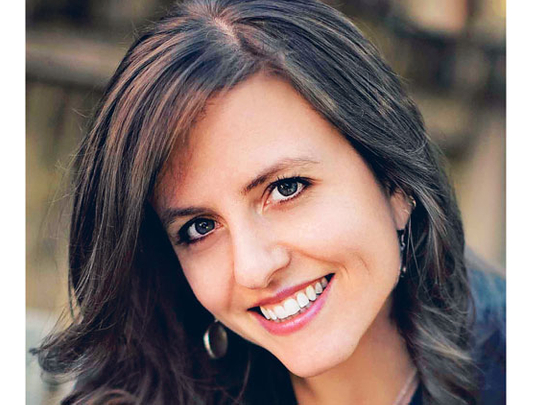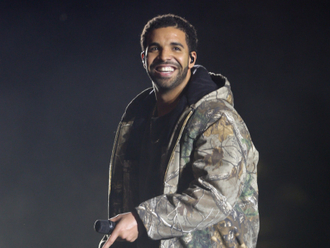
As 16-year-old Rebecca Skloot sat in a biology lesson at high school, a passing reference was made to HeLa cells. The cells were cultivated from a woman called Henrietta Lacks (HE-nrietta LA-cks) in the 1950s. This was all the information given about the donor. But who was this woman, Skloot wondered.
Her curiosity, years later as an adult, led her on an 11-year journey to discover who Henrietta was, what happened to her and how her cells came to be used to develop a vaccine for polio, help to develop in vitro fertilisation, cloning and gene mapping.
"I wasn't planning to be a writer but a vet. … I wasn't interested in writing until my mid-twenties," Skloot told Weekend Review from London. The story stuck with her all this time and she was obsessed with wondering who Henrietta was. "I realised I could find the story and write it myself," she said.
The Immortal Life of Henrietta Lacks was the product of her years of hard work and research. Henrietta's cancer cells were taken as a sample while she was undergoing treatment for cancer at Johns Hopkins hospital, Baltimore, and were found to be "immortal". This means they were able to be grown in a laboratory in culture, for the first time in medical history.
Making connections
Despite her long journey to discovering the truth behind the cells, Skloot said she never even thought about giving up.
"I'm just very hard-headed and determined — my parents saw the same side of me when I was young. I would do things my way and they would not stop me. I was very determined and I felt that the story was so important," she said, continuing that it initially took her one and a half years to convince the Lacks family to speak to her in the first place.
"When I started finding out more about them, it just made me more determined," Skloot said. She eventually had a breakthrough with the Lacks family, who were very distrusting of anyone interested in Henrietta's story because of various bad experiences in the past and a massive distrust of any of the doctors at Johns Hopkins hospital.
Meeting the Lacks family was also a learning curve for the first-time non-fiction writer. "I had to really learn their background and how they talked about science. Their religious beliefs were very foreign to me. [Some] moments were very scary for me but they're a very light family; they laugh a lot, they're very funny and they use humour to deal with the difficulties in life," Skloot said of Henrietta's descendants.
HeLa cells have been sold around the world for decades, with medical companies making millions — if not billions — from sales, research and development. Despite this, the Lacks family has not received any money from HeLa cells and, ironically, can't afford health care themselves. She spent much of her time researching the book with Deborah Lacks, Henrietta's daughter. Their relationship developed, trust was earned and the research turned into a voyage of discovery for both Deborah and Skloot.
"The story is about the immortal life of the cells and also the story of the impact on her [Henrietta's] family after her death. It's important for people to see the family and their reaction and where they are today. … You understand the cells differently when you see how the family reacts to them," she said.
Despite Skloot's resistance to her editor and Deborah, she herself figures in the book. Deborah started going on research trips with Skloot and the journeys were sometimes fraught. "I had no desire to be in the book," she said, "this is their story and [I felt] I don't belong in this."
Skloot would return from trips with Deborah having learnt incredible things about Henrietta and HeLa cells. "She very nearly had a stroke on one of our research trips. It wasn't that I was inserting myself into the story but it was that I was part of the story," she said.
Skloot's trips with Deborah had a direct effect on her "it nearly killed her. It was a big range of emotions."
As a science writer, Skloot wanted the book to highlight the story of HeLa and the effect on the Lacks family but also didn't want it to demonise the scientists who had made the discoveries. "This is a story that there are human beings behind every biological sample and some care about them; and then there are scientists behind the people and it's important that we let this science happen. But how do we walk the line with respect to where the person's tissue is from but allow science to move forward?" she questioned.
At the moment, there is no general regulation for informed consent with regards to taking tissue samples from patients for scientific research. While there are some kinds of tissue research with informed consent, mostly there is no consensus, as patients' IDs are removed from the samples. In Henrietta's case her medical records were released and published without her family's knowledge, leading to great upset for her children. Personally, Skloot said: "I have no problem with my tissue being used [in research]."
Two sides of the story
Released in the United States last February, the book has been well received among scientists. With her science background, Skloot said it was important for her to portray both sides and "show why science is good".
After all the research was completed, Skloot came to write the book, which she called "torture!" because of difficulties with the Lacks family but also because of the complex nature of the topic and the amount of information she had gathered about HeLa cells. A large number of the Lacks family has read the book — some to check for factual errors and dates, etc — and Henrietta's descendants (who don't know her story) have been fascinated to learn about her contribution to worldwide health and scientific developments. "They found out and they were proud of her," she said of Henrietta's grandchildren.
The Lacks family have attended Skloot's book tours, have appeared on TV and now Oprah Winfrey with HBO is making a film about Henrietta.
The story affected the author to such an extent that she set up the Henrietta Lacks Foundation to generate money for her descendants to help pay for their own health care. She also set up an education fund for the family and many readers have donated to date, she said.
Skloot is at present travelling on her book tour but has plans to write a version of her work for younger readers. High school children have shown an interest in the book but have found some of the content difficult to understand in places, hence Skloot will be preparing a version for 8- to 13-year-olds.
Would she consider writing a biography of George Gey?
"Gey is an eccentric and fascinating character, but I have no plans to write a biography of him — my book was at least a partial biography of him but for me the most interesting parts of his story lie in the places where it overlapped with the HeLa story," she says.
For more information about the Henrietta Lacks Foundation and to donate, visit www.henriettalacksfoundation.org








